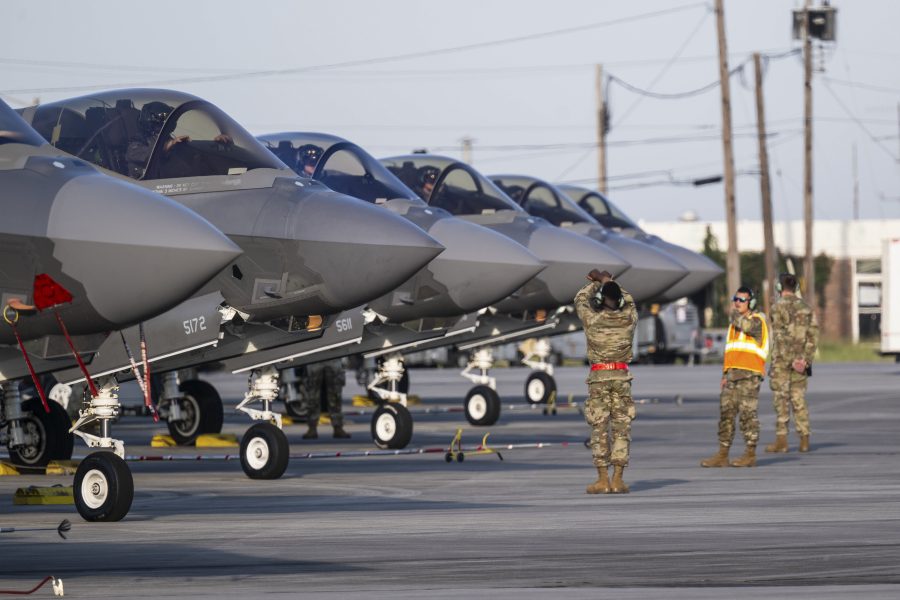Nearly 23 years after Lockheed Martin won the contract for the Joint Strike Fighter, the F-35 has been cleared to enter full-rate production, the Pentagon announced March 12.
Although the designation is in some ways moot—the F-35 production enterprise is already operating at a rate close to its capacity—the designation means the Joint Program Office can now negotiate multiyear contracts for the fighter.
Pentagon acquisition executive William LaPlante signed an acquisition decision memorandum approving Milestone C, or full-rate production, after a March 7 meeting of the Defense Acquisition Board, which he chairs. He made the call “after considering the results” from F-35 operational test and evaluation, live-fire testing, the System Development and Demonstration exit criteria, applicable laws, and future production strategy, the Defense Department said in a press release.
Proceeding to full-rate “requires control of the manufacturing process, acceptable performance and reliability, and the establishment of adequate sustainment and support systems,” the release noted.
For the last four years, the full-rate decision was stymied by difficulty integrating the F-35 with the Joint Simulation Environment, a wargaming system that helps decision-makers find the right mix of platforms and weapons for given war scenarios. That hurdle was cleared in September 2023, the Pentagon said.
Lockheed executive vice president for aeronautics Greg Ulmer recently forecast that the F-35 program will have a stable production rate goal of about 156 aircraft per year for at least the next five years.
The F-35A has been operational with the Air Force since 2016. The service continues to pursue a planned fleet of 1,763 aircraft.
Negotiations between the JPO and Lockheed Martin for production Lots 18 and 19 have been underway since last fall; Lot 20 is expected to be the first contract under which multiyear status can play a role. Under a multiyear contract, contractors can be assured of a longer run of production and make economic order quantities of materiel, reducing their costs and the cost to the government.
In a press release, LaPlante called the milestone “a major achievement for the F-35 program,” highlighting for the military services, international partners, and FMS customers that “the F-35 is stable and agile, and that all statutory and regulatory requirements have been appropriately addressed.”
He called the fighter the “premiere system that drives interoperability with our allies and partners” while contributing to integrated deterrence and the precepts of the National Defense Strategy.
The F-35’s status means it’s now “well-positioned to efficiently produce and deliver,” LaPlante said. He praised the efforts of program director Air Force Lt. Gen. Michael Schmidt and the Joint Program Office, saying the program has made “significant improvements over the last decade, and we will always be driven to continuously improve sustainability, interoperability and lethality” of the fighter. The program can now “focus on the future of the F-35, instead of the past.”
There are still some ongoing issues with the F-35, according to Raymond O’Toole, acting director of operational test and evaluation, which greenlighted the jet’s Milestone B.
“The program is working to address” some of those issues, which include a need for improved test infrastructure for developmental support, and to ensure “readiness to test of the upcoming Block 4 capabilities,” O’Toole said in the announcement release.
The F-35 program has delivered more than 990 aircraft to the U.S. military services, partners, and FMS customers, the Pentagon said.
Ironically, the full-rate announcement comes as F-35 deliveries are on hold pending testing of the Tech Refresh 3 hardware and software, on which the Block 4 upgrade depends. Lockheed is storing about 70 completed F-35s until that testing concludes—expected in mid-to-late summer—but production continues.
